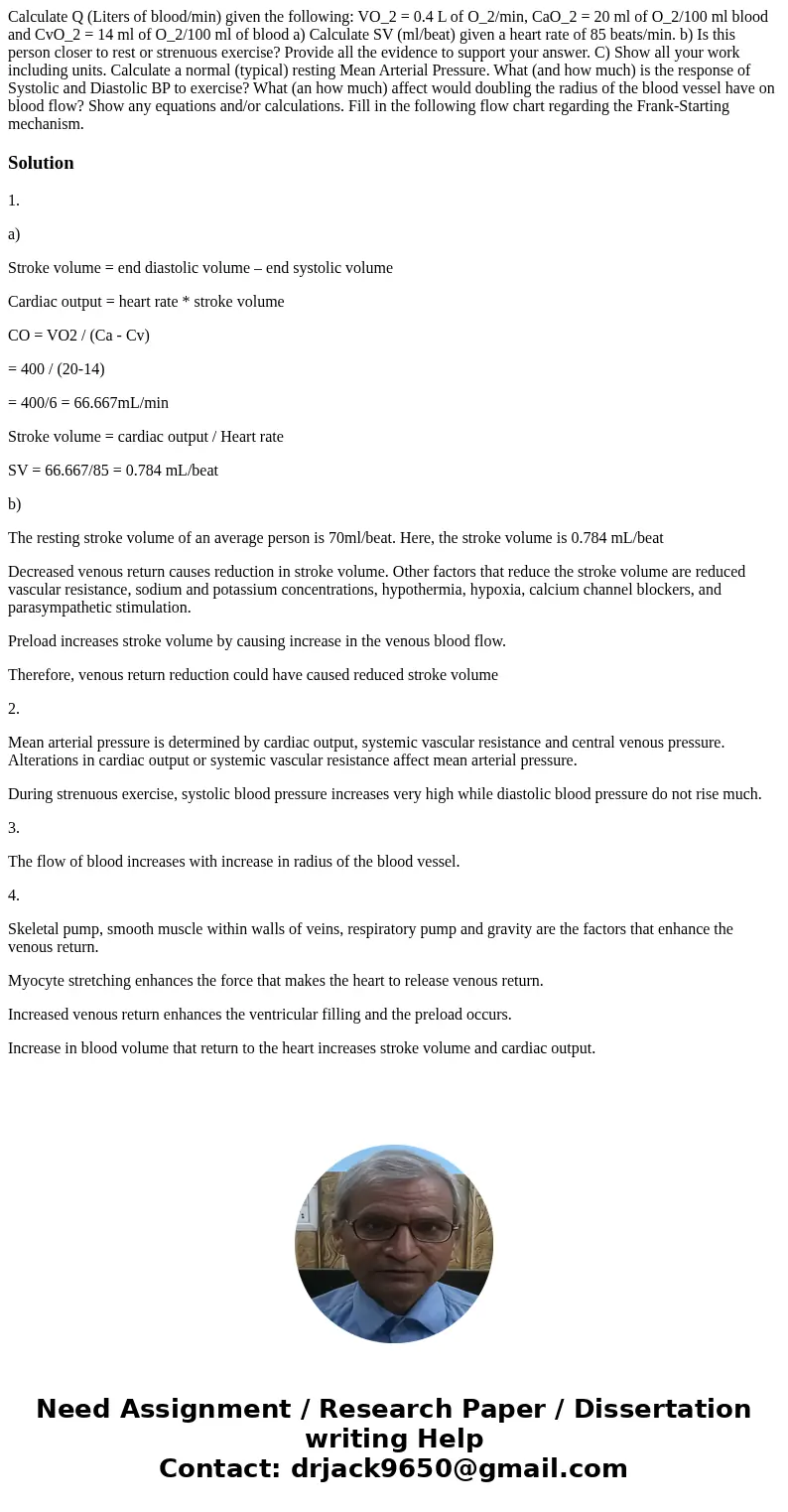Calculate Q Liters of bloodmin given the following VO2 04 L
Solution
1.
a)
Stroke volume = end diastolic volume – end systolic volume
Cardiac output = heart rate * stroke volume
CO = VO2 / (Ca - Cv)
= 400 / (20-14)
= 400/6 = 66.667mL/min
Stroke volume = cardiac output / Heart rate
SV = 66.667/85 = 0.784 mL/beat
b)
The resting stroke volume of an average person is 70ml/beat. Here, the stroke volume is 0.784 mL/beat
Decreased venous return causes reduction in stroke volume. Other factors that reduce the stroke volume are reduced vascular resistance, sodium and potassium concentrations, hypothermia, hypoxia, calcium channel blockers, and parasympathetic stimulation.
Preload increases stroke volume by causing increase in the venous blood flow.
Therefore, venous return reduction could have caused reduced stroke volume
2.
Mean arterial pressure is determined by cardiac output, systemic vascular resistance and central venous pressure. Alterations in cardiac output or systemic vascular resistance affect mean arterial pressure.
During strenuous exercise, systolic blood pressure increases very high while diastolic blood pressure do not rise much.
3.
The flow of blood increases with increase in radius of the blood vessel.
4.
Skeletal pump, smooth muscle within walls of veins, respiratory pump and gravity are the factors that enhance the venous return.
Myocyte stretching enhances the force that makes the heart to release venous return.
Increased venous return enhances the ventricular filling and the preload occurs.
Increase in blood volume that return to the heart increases stroke volume and cardiac output.

 Homework Sourse
Homework Sourse